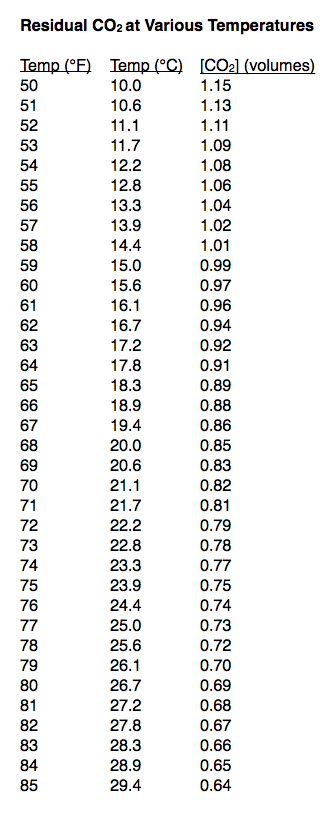RPh_Guy
Bringing Sour Back
I'm interested in trying a LoDo brew some time in the next few months and I have some newbie questions.
I read much of the site, but it's a lot to take in at once. Extremely helpful though!
Here's my main equipment for 5-6 gal batches:
10 gal mash cooler with screen and valve
8.5 gal kettle with valve
Copper CFC and IC, silicone tubing
Drill and stir tool for aeration
Stir plate, flasks
Ported Fermonsters
Bottling bucket, 12 & 22oz bottles, bottling wand
3-roller Kegco (same as Monster Mill) grain mill
I'm trying to figure out where to begin, the minimum stuff I need to change, and the cheapest way to get there.
I've never conditioned grain. Is there any risk to damaging my mill? How important is this? What do you mean by "Coarser crush inhibits LOX"?
I use RO water.
To deoxygenate mash water, the "yeast method" seems reasonable. I have both potassium and sodium metabisulfite and a good scale. I need a cap for the kettle.
Floating cookie trays seem reasonable. I'll try to find some that aren't aluminum.
When you're talking about sulfite dosage, that's ppm free SO2, right?
I don't see how using sauergut actually relates to LoDo, but I love the idea, so thanks for that at least!
I think I can do full-volume no-sparge in my 10 gal cooler. I just need to get a mash cap. I can use tubing to drain the mash water down to the bottom of the mash tun below the grain. That's "underletting", right?
I can certainly boil gently. I'm unclear whether there's anything I need to change with that. I can't really separate break material if I'm using a CFC ... It's fine to copper if I use Brewtan B?
I usually make vitality starters, so I'll be sure to have that ready to pitch immediately and then aerate. My liquid yeast is generally very fresh.
Ferment as normal. I keep the fermenter closed until bottling.
For bottling, I should bottle straight from the fermenter? I can easily use 22oz bottles. I also use O2-absorbing caps.
I've never bottled straight from the fermenter. Would it be reasonable to dissolve my corn sugar in boiling water, cool, and use a syringe to add the appropriate amount to each bottle right before filling? The small volume of priming solution probably can't pick up enough O2 to matter, right? I'm thinking I should try to minimize headspace.
What if instead I were to use a cap in my bottling bucket?
Any idea whether LoDo would benefit long-term sours?
Thanks for your help!
Please no hate on this thread. I'm well aware of some members' reservations about the process.
I read much of the site, but it's a lot to take in at once. Extremely helpful though!
Here's my main equipment for 5-6 gal batches:
10 gal mash cooler with screen and valve
8.5 gal kettle with valve
Copper CFC and IC, silicone tubing
Drill and stir tool for aeration
Stir plate, flasks
Ported Fermonsters
Bottling bucket, 12 & 22oz bottles, bottling wand
3-roller Kegco (same as Monster Mill) grain mill
I'm trying to figure out where to begin, the minimum stuff I need to change, and the cheapest way to get there.
I've never conditioned grain. Is there any risk to damaging my mill? How important is this? What do you mean by "Coarser crush inhibits LOX"?
I use RO water.
To deoxygenate mash water, the "yeast method" seems reasonable. I have both potassium and sodium metabisulfite and a good scale. I need a cap for the kettle.
Floating cookie trays seem reasonable. I'll try to find some that aren't aluminum.
When you're talking about sulfite dosage, that's ppm free SO2, right?
I don't see how using sauergut actually relates to LoDo, but I love the idea, so thanks for that at least!
I think I can do full-volume no-sparge in my 10 gal cooler. I just need to get a mash cap. I can use tubing to drain the mash water down to the bottom of the mash tun below the grain. That's "underletting", right?
I can certainly boil gently. I'm unclear whether there's anything I need to change with that. I can't really separate break material if I'm using a CFC ... It's fine to copper if I use Brewtan B?
I usually make vitality starters, so I'll be sure to have that ready to pitch immediately and then aerate. My liquid yeast is generally very fresh.
Ferment as normal. I keep the fermenter closed until bottling.
For bottling, I should bottle straight from the fermenter? I can easily use 22oz bottles. I also use O2-absorbing caps.
I've never bottled straight from the fermenter. Would it be reasonable to dissolve my corn sugar in boiling water, cool, and use a syringe to add the appropriate amount to each bottle right before filling? The small volume of priming solution probably can't pick up enough O2 to matter, right? I'm thinking I should try to minimize headspace.
What if instead I were to use a cap in my bottling bucket?
Any idea whether LoDo would benefit long-term sours?
Thanks for your help!
Please no hate on this thread. I'm well aware of some members' reservations about the process.
Last edited:







